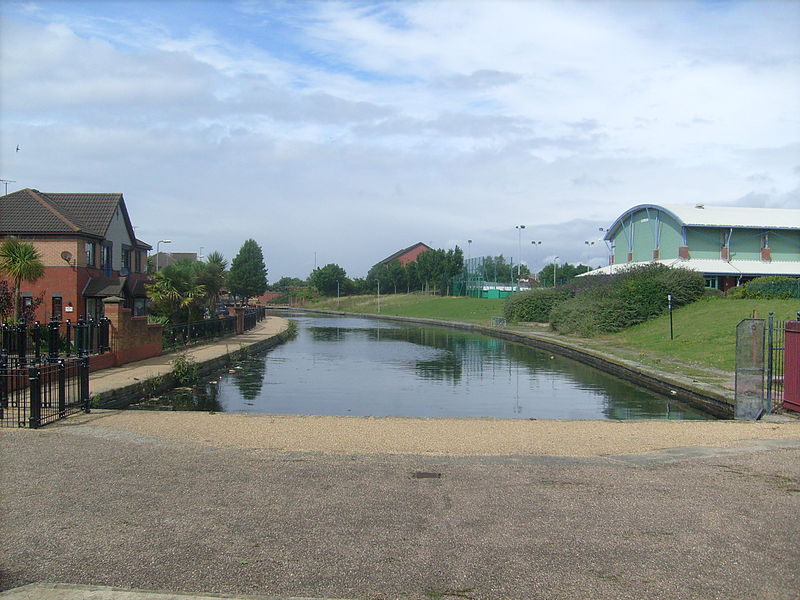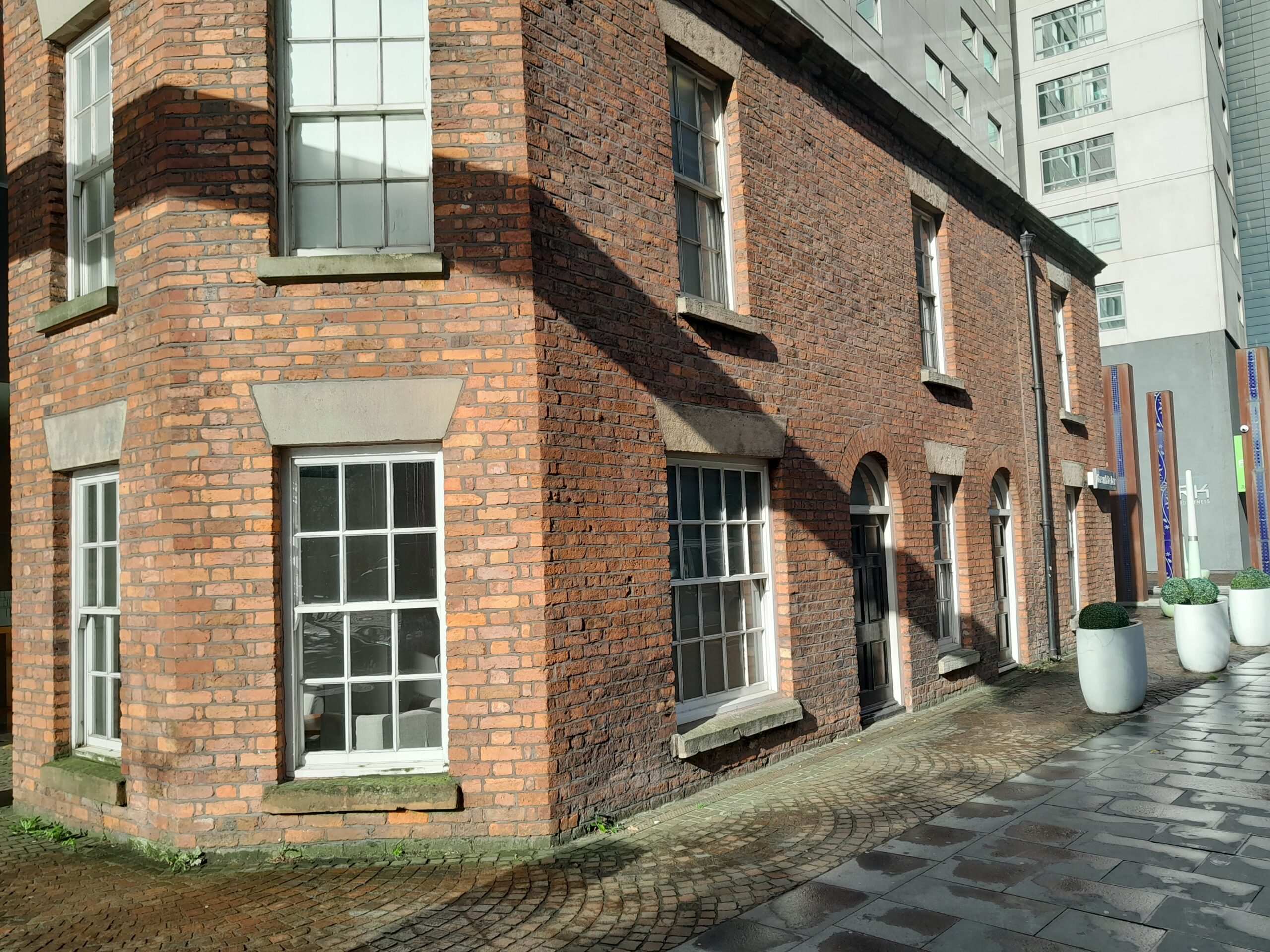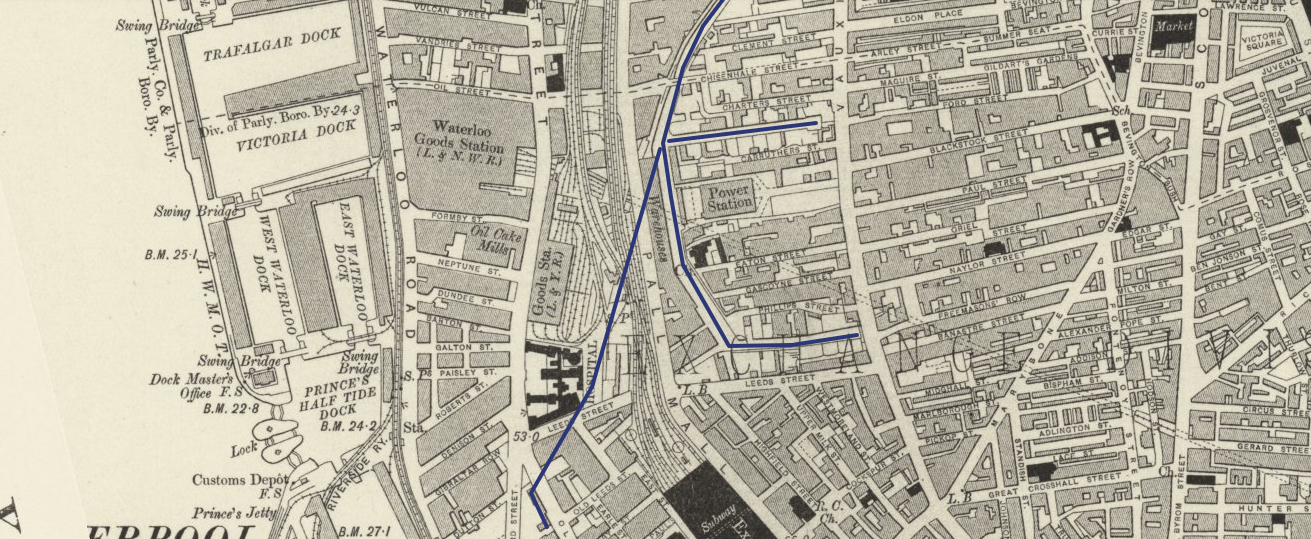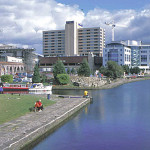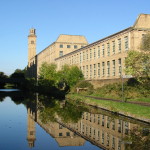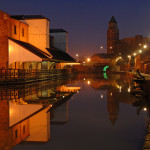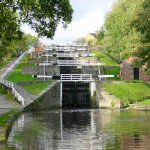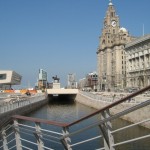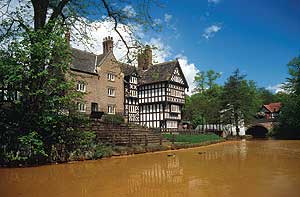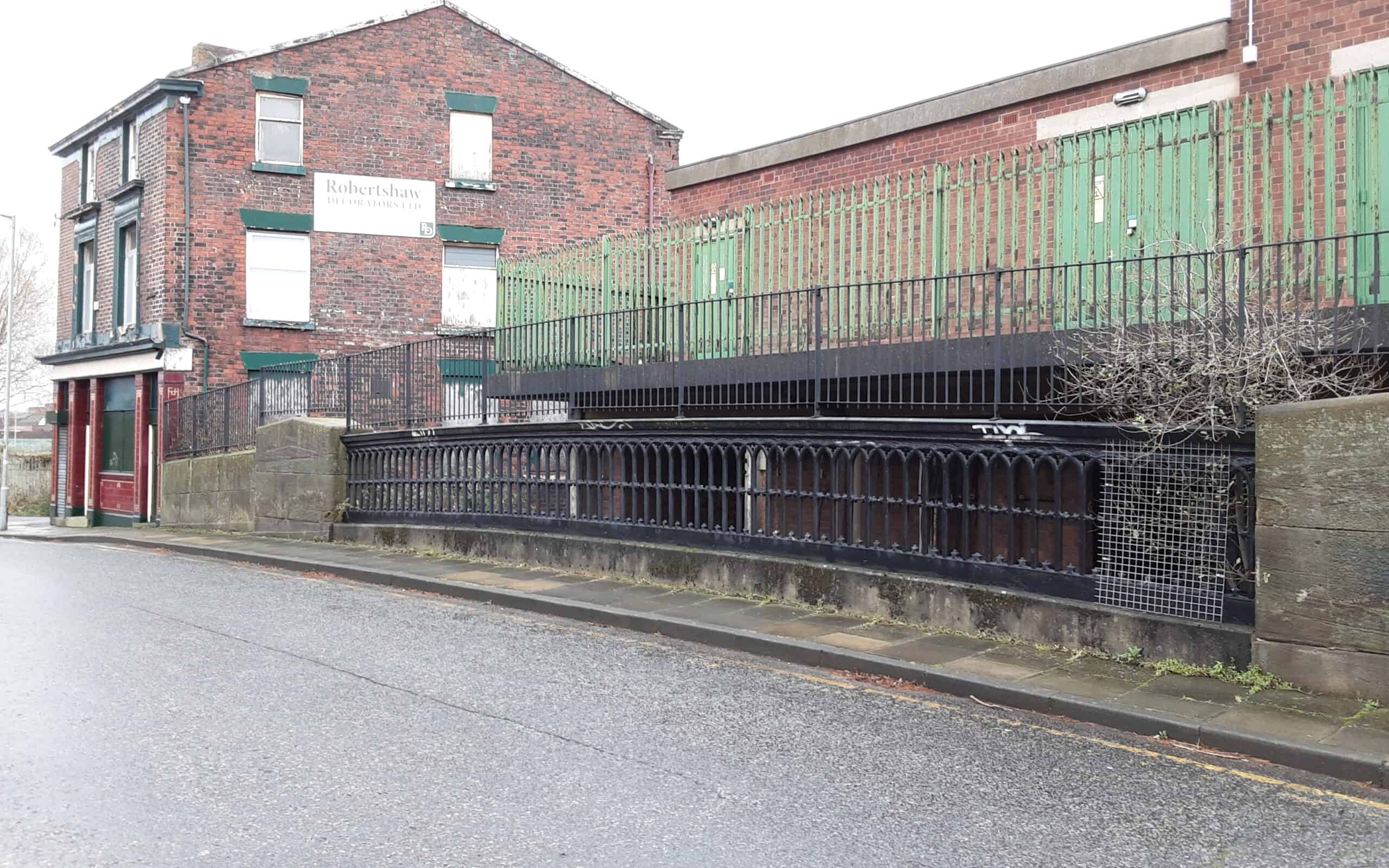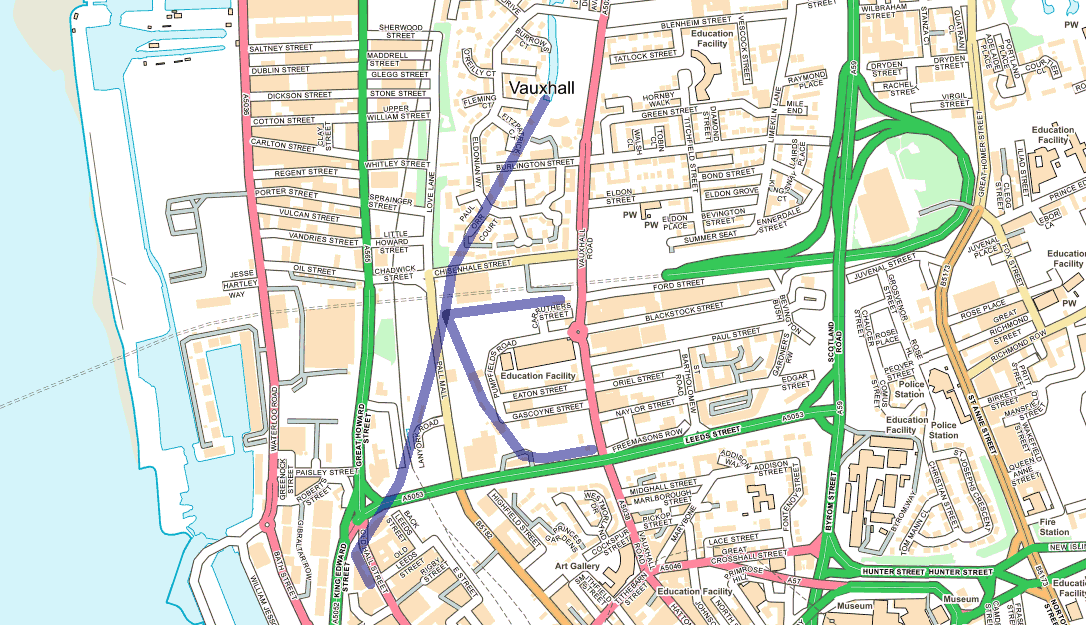Cycle Special – Leeds&Liverpool Canal (2015)
Jon and I have covered many parts of the canal on many occasions and had often talked about paying homage to this magnificent engineering wonder, by exploring its entire length in one go!
talked about paying homage to this magnificent engineering wonder, by exploring its entire length in one go!
We hadn’t got access to a narrowboat … but we sure did have bikes, and were forever up for an adventure! This is an incredibly simple idea and, with only a minimal amount of organising, was easy to put together … in May 2015 we executed our plan, it turned out to be a phenomenal success.
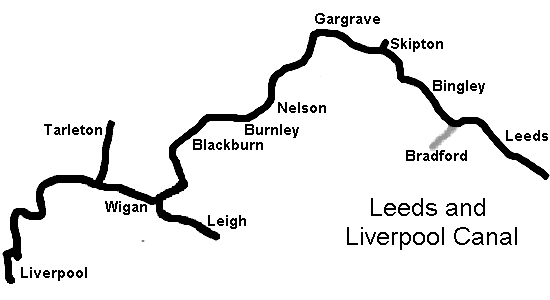 History ~ The Leeds & Liverpool Canal was the last of the three trans-Pennine canals. It has a mainline of 127.25 miles long, making it easily the longest canal built by one company in the country! It links the Aire & Calder Navigation at Leeds with the northwest seaport of Liverpool, forming a through route between the North Sea and the Irish Sea. Although the last 1/4 mile (Liverpool end) has been filled in, it is still possible to complete the route via Eldonian Village.
History ~ The Leeds & Liverpool Canal was the last of the three trans-Pennine canals. It has a mainline of 127.25 miles long, making it easily the longest canal built by one company in the country! It links the Aire & Calder Navigation at Leeds with the northwest seaport of Liverpool, forming a through route between the North Sea and the Irish Sea. Although the last 1/4 mile (Liverpool end) has been filled in, it is still possible to complete the route via Eldonian Village.
Cycling The Route ~ The conventional way to travel by bike would be to go west to east, to take advantage of probable prevailing winds … so let’s defy logic and tackle it the other way. I have reckoned that, although canals can get rather exposed to headwinds, the latter stage of the route is the more gentle. Also, it would seem more natural for us to head westwards and towards ‘home’.
It is possible to cycle the towpath along the whole canal, the only exceptions are two tunnels at Foulridge and Gannow. Navigation is not an issue and there aren’t any major junctions to confuse you (it is well signposted anyway). That said, a 1:50000 set of maps is required to pinpoint your position in relation to the daily section you are travelling on, to locate facilities and for any necessary diversions due to unexpected towpath maintenance.
Track Elevation ~
To get to and from our start/finish points we used the train … taking us into and out of the mighty cities of Manchester, Leeds and Liverpool.
DAY ONE ~ Leeds to Earby = 42.6 miles / 2100 feet ascent / 1700 feet descent / 5:20 hours:mins + breaks
DAY TWO ~ Earby to Wigan = 50.7 miles / 2100 feet ascent / 2500 feet descent / 6:20 hours:mins + breaks
DAY THREE ~ Wigan to Liverpool = 37.9 miles / 650 feet ascent / 700 feet descent / 4:44 h:m + breaks
Based on a blanket 8mph
~
Costings ~ an INCREDIBLE £101pp: this includes train fares/accommodation/meals (breakfast, packed lunch, evening meal) … you need to book well in advance to get the best deals.
~
Full map details (the route, places to eat, toilets, cycle repair shops, food stores etc) and suggested accommodation details are available on request … it’ll cost ya a pint! … VA
~
~
TIPS & HINTS …
Here are some pointers for anyone considering following in our tyre tracks:
-
- Cycle – mountain bike/ensure that it is well maintained and in good working order/anti-puncture road tyres / comprehensive tool kit/bell … it will get well used!
-
- Luggage – travel extremely lightly/35-litre rucksacks as opposed to panniers/clothes and gear in separate waterproof bags/first-aid kit
-
- Duration – we did this in 2 nights & 3 days/you may wish to consider 3 nights & 4 days(?)
-
- Timing – from May to September/mid-week is strongly advised … although you will have large swathes of the canal to yourself, you will be competing with many walkers in built-up areas (ESP. weekends)
-
- Accommodation – range enormously; limited hostels, motels ideal/ensure that your choice has cycle storage facilities
-
- Direction – I categorically defend my decision to do this east to west/you are probably going to do this in the summer and will be unlucky for strong winds to be a factor/see the above elevation guide (ie a flat ending)/Liverpool’s waterfront makes for a majestic finale
-
- Navigation – the beauty of this route is that it is extremely easy to follow/you will need however to come off the towpath on occasions … there are two tunnels where you will need to go ‘over the top’/there could be sections closed where work on the towpath is being carried out/you will need to exit for your accommodation or for facilities
-
- Maps – although we did use an array of gizmos … gps, I-Pad and smartphones .. the bedrock of my navigation came from good old RELIABLE paper maps/I used 1:50,000 O/S digital mapping, segregated into 3 sections/in addition, I used 1:10,000 (Streetmap) for locating our accommodation/I have devised a simple and highly effective method of quickly pin-pointing your position while travelling on canals (Copyright: ME!!! ???)
-
- Trains – we booked a set outward journey and an open inward journey (via ‘Trainline’) / I highly recommend you reserve your bikes (via ‘Trans-Pennine Express’)/officially only 2 are permitted on each train, 3 can be stowed in reality/you will have to take your chances if you choose not to use your reserved (bike) train from Liverpool/the train service is extremely frequent and fast/ensure you book well in advance to take advantage of cheaper fares
- Towpaths – the disparity in towpath surface is vast! … ranging from silky smooth ribbons of tarmac ~ to ~ narrow stoney strips of quagmire (ie prone to mud is another seasonal consideration)!
~
LEIGH BRANCH (cycled 2015)
History ~ This was not opened until 1820, it connected into the Bridgewater Canal and the capital of cotton … Manchester. The craft could now avoid having to cross the Mersey Estuary to travel south.
Cycling The Route ~ Another short train journey is required from Manchester to Wigan (£4.20). The route follows the main L&LC line, before branching off to Leigh, where it conveniently meets the Bridgewater all the way back to the heart of Manchester at Castlefield.
The towpath is by and large extremely well surfaced, although there are some original stretches that could be prone to mud(?). There is a short section around Astley Green where cycling is prohibited (you will have to dismount, plus negotiate some awkward gates!!!).
22.9 miles / 324′ ascent / 319′ descent / 3:18 hours:mins + breaks
~
RUFFORD BRANCH (cycled 2019)
History ~ From 1740 until the late C18th boats wishing to travel from Wigan to Preston did so via the River Douglas. The Rufford Branch of the L&LC, also known as the Lower Douglas Navigation, provided an alternative route for much of the distance. It was opened in 1781, long before the mainline was completed in 1816.
Cycling The Route ~ As this is a circular, the car can be used to get to the start/finish point. This tranquil route is more interesting than spectacular, as it slices through the flat and fertile Lancashire Coastal Plain.
The outward journey ends as canal meets river and is cycle unfriendly thereafter. This would only suit the driest of conditions as it could be susceptible to thick mud. The inward journey is a mix of road, country lane and nature reserve paths.
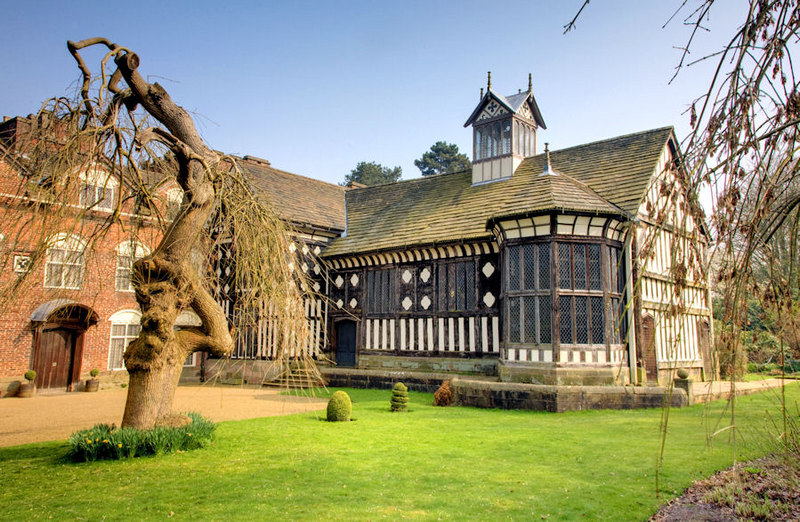
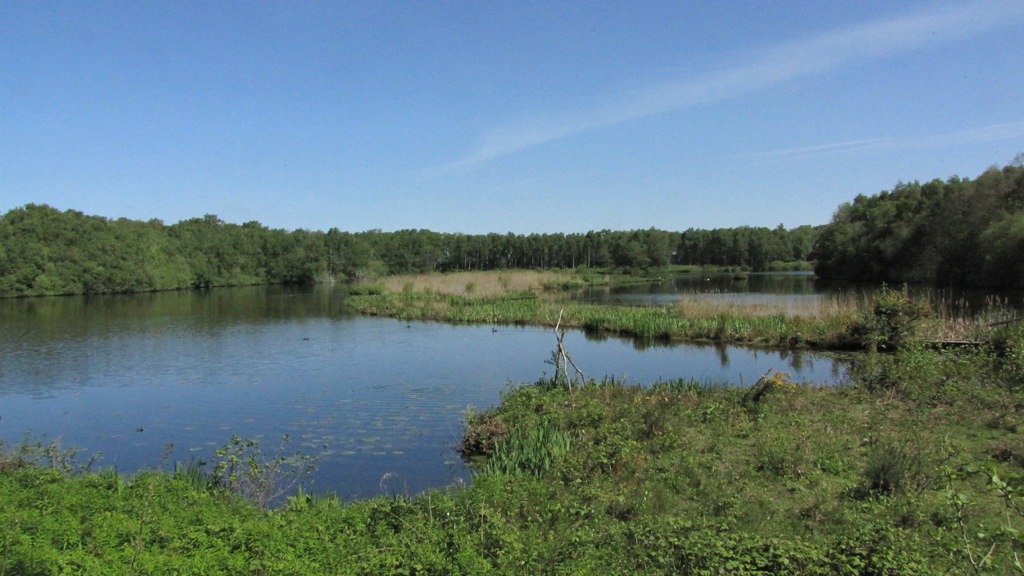
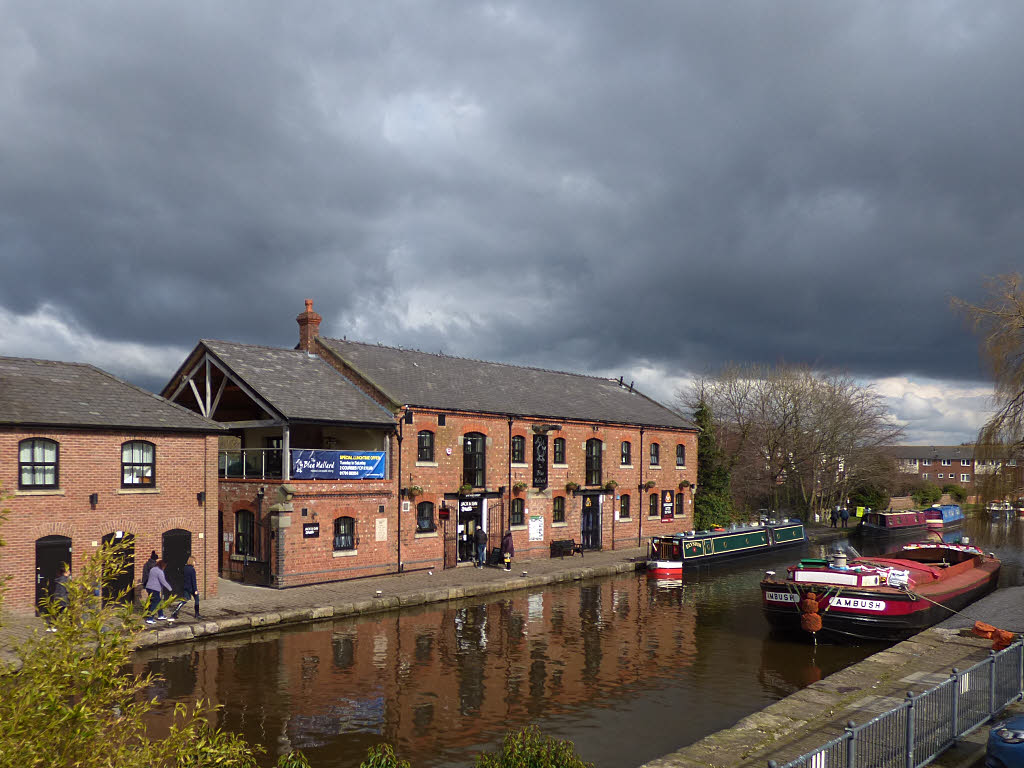
16.3 miles / 256′ ascent & descent / 2:43 hours:mins + breaks
~
CLARKE’S BASIN & ELDONIAN VILLAGE (walked 2019)
History ~ The original terminus of the L&LC was at Clarke’s Basin (around Old Hall Street in Liverpool). It was built in 1792 and closed in 1886 (to accommodate the expansion of the railway) and was the closest link the canal had to the dock system until the Stanley Dock branch was built in 1846. Cargo would have to be transhipped from boat to waggon and then taken to the docks. It was realigned and moved slightly east to Pall Mall.
In 1978, a local housing group from Eldonian Street were told they were to be re-housed and the community split up. They protested and the Eldonian Village plan was created. The area was cleared and the canal shortened yet further. The demolition of the Tate & Lyle sugar refinery marked the end of the canal as an industrial feature.
Walking The Route ~ Although this officially starts at the point we entered Liverpool at the Stanley Docks flight of locks, it can be conveniently picked up anywhere on the route.
Very little of the original canal exists beyond Eldonia and present surroundings are somewhat saddening on the eye! but small reminders from the past can be seen and a great sense of its historic course can be gleaned.